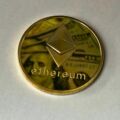What Is An NFT And How Does It Work
Unlocking the World of Digital Ownership: What is an NFT and How Does it Work?
In recent years, the term “NFT” has been buzzing around the digital world, leaving many wondering what this mysterious acronym stands for and how it works its magic. As a startup enthusiast or entrepreneur, you’re likely eager to grasp the concept of NFTs and their potential impact on your business or investments. In this article, we’ll delve into the realm of Non-Fungible Tokens (NFTs), exploring their definition, functionality, and the innovative technology behind them.
What is an NFT?
An NFT, short for Non-Fungible Token, represents a unique digital item that cannot be exchanged or replaced with another identical asset. This characteristic sets NFTs apart from other types of cryptocurrencies like Bitcoin or Ethereum, which are fungible – meaning one unit is interchangeable with another.
Think of an NFT as a rare collectible, akin to a limited-edition art piece, a signed baseball, or a first edition book. Each NFT has its own distinct value and provenance, making it scarce and valuable in the digital realm.
How Does an NFT Work?
NFTs are built on blockchain technology, which enables secure, transparent, and tamper-proof transactions. Here’s how they work:
- Creation: An artist, musician, or creator develops a unique digital asset – such as a piece of art, music, video, or even in-game items.
- Tokenization: The creator converts their digital asset into an NFT by assigning it a unique token on the blockchain. This process involves writing code that defines the asset’s characteristics, ownership rules, and any associated metadata.
- Blockchain Storage: The NFT is stored on a blockchain – typically Ethereum or another compatible network. This decentralized storage ensures the NFT remains tamper-proof and resistant to censorship.
- Ownership Transfer: When someone buys an NFT, the ownership is transferred by updating the token’s information on the blockchain. This transaction is recorded publicly, ensuring the new owner has exclusive control over the digital asset.
- Authentication: To verify authenticity, each NFT contains a unique identifier and cryptographic proof of its origin.
Types of NFTs
While we often associate NFTs with art and collectibles, their applications are far broader:
- Digital Art: Unique artistic creations, such as paintings, sculptures, or installations.
- In-Game Items: Exclusive virtual items in games like rare skins, characters, or powers.
- Music: Original songs, albums, or exclusive tracks from emerging artists.
- Virtual Real Estate: Parcels of digital land within online environments or games.
- Collectibles: Limited-edition digital versions of traditional collectibles like sports cards, comics, or rare books.
Benefits and Advantages
NFTs offer several benefits for creators, collectors, and entrepreneurs:
- Ownership Proof: NFTs establish clear ownership and provenance for digital assets.
- Monetization Opportunities: Creators can sell their unique digital works to fans and collectors.
- Rarity and Scarcity: Limited supply creates a sense of urgency and value around NFTs.
- Investment Potential: Some NFTs appreciate in value over time, making them attractive investment opportunities.
- Community Engagement: NFT marketplaces foster communities around shared interests, connecting fans with creators.
Popular NFT Marketplaces
Several platforms have emerged to facilitate the creation, buying, and selling of NFTs:
- OpenSea: A leading marketplace for rare digital items and collectibles.
- Rarible: Focuses on creating and trading unique digital art pieces.
- SuperRare: An invitation-only platform showcasing high-end, limited-edition digital art.
- Mintable: Allows artists to create, manage, and monetize their NFTs.
Challenges and Controversies
As with any emerging technology, concerns and debates surround the NFT ecosystem:
- Regulatory Uncertainty: Governments are still exploring how to regulate NFTs, leading to uncertainty around taxation, intellectual property rights, and more.
- Environmental Impact: The energy consumption associated with minting and storing NFTs has raised environmental concerns.
- Scalability Issues: Current blockchain infrastructure may struggle to handle the increasing demand for NFT transactions.
The Future of NFTs
As the digital world continues to evolve, we can expect NFTs to play a significant role in various sectors:
- Gaming and Esports: Exclusive in-game items and rewards will likely become increasingly popular.
- Social Media and Virtual Influencers: Brands may create unique digital experiences for their fans and followers.
- Art Galleries and Museums: NFTs might enable new models for art ownership, display, and accessibility.
Conclusion
NFTs represent a paradigm shift in how we think about digital ownership, scarcity, and value. By leveraging blockchain technology, creators can now monetize unique digital assets while ensuring their provenance and authenticity. As the ecosystem continues to grow, entrepreneurs and startups should consider exploring NFT opportunities – whether it’s creating, investing, or integrating them into their business strategies.
The world of NFTs is vast and rapidly evolving. By staying informed and engaged with this innovative space, you’ll be better equipped to navigate its possibilities and potential challenges. Join the conversation and stay up-to-date on our blog as we continue to explore the exciting realm of startups and entrepreneurship!








